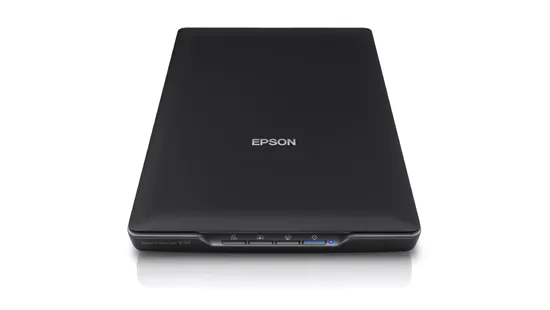Multi-Family Financing

Florida Grants, Loans, and Tax Incentives For Investors
Two Dozen Excellent Opportunities for Investors in Affordable Multi-Family Projects
Florida has become one of the fastest growing states in the nation for retirees and families who are relocating to the state due to its excellent weather conditions and absence of state income and personal property taxes. According to the state economist (reported in July 2019), 906 people are moving to Florida EACH DAY, which amounts to 330,605 persons per year.
This increased demand for housing has created a rise in both purchase and rental prices, and a significant shortage of affordable housing and available units. In order to be able to keep up with the population growth, several counties have begun to develop attractive plans and programs to provide incentives for investors to develop affordable low income Single Family and Multi-Family Housing within their regions. Charlotte County (which is located between the major metropolitan cities of Sarasota and Ft Myers) is one of top counties in the USA with the oldest per-capita residents. Its officials have recently completed a two-year study with over 50 state, federal, and county stakeholders to analyze community data and design an organizational framework that allows for the full exploration of their most pressing housing needs. Before you seek private financing for your project, you should consider the wide range of Free Land, Development Grants, Low-Interest Loans, and Tax Credits already available within your county.
These are examples of about 2 dozen federal, state and county grants, loans, and tax incentives that are available right now in 2020 throughout Florida which are very beneficial for Multi-Family Projects (but may not yet be known to you).
Each county is developing similar reports, but in many cases they are not yet available (or up to date).
Charlotte County is a good partner for Investors and Developers
In the retirement community of Charlotte County, the average annual salary is $38,131 and the median household income is $44,865. Based on the median household income levels, the average rent/mortgage payment (including utilities) should be no more than $13,459.50 annually, or $1,122 per month. There are two important points to consider, the first is that there simply is no housing available at that price point that would include water, electric or gas. Secondly, the median household income level measure means that half of the population of the county fall above it, and half fall below it. Both points indicate that Charlotte County lacks affordable housing stock and a significant portion of the population is paying more than 30% of their income on housing costs
By 2025, Charlotte County needs to add 10,918 more housing units, just to keep up with the demand. According to the Multi-Listing Service, In July 2018, the median rent for a two bedroom home was $1350 per month, and a three bedroom home is $1550. The Bureau of Economic Research projections say that 46% increase by 2035, with 65% of those being over the age of 65. According to EDO and Census, Charlotte County has a population of about 169,642 and by 2025 is projected to have 182,033, providing great opportunities for investors and developers of Multi-Family Units
According to the MLS in July 15, 2018 the average cost to rent or buy a 2 or 3 bedroom home was as follows:
RENT: 2 bedroom home: 7 available; $1,350/median rent; range $900 – $1,400
RENT: 3 bedroom home: 29 available; $1,550/median rent, range $1,125 – $2,995
What is the market rate rent for a 2 bedroom and a 3 bedroom apartment/condo?
RENT: 2 bedroom condo : 10 available; $1,188/median rent; range $1,000 – $2,000
RENT: 3 bedroom condo: 9 available; $1,800/median rent; range $1,400 – $1,875
BUY: 2 bedroom home: 214 available; $204,000/median price; range $69,000 – $865,000
BUY: 3 bedroom home: 961 available; $289,000/median price; range $99,000 – $5,500,000
BUY: 2 bedroom condo: 236 available; $192,515/median price; range $69,000 – $819,000
BUY: 3 bedroom condo: 112 available; $349,000/median price; range $134,900 – $1,250,000
According to The Shimberg Center for Affordable Housing at the University of Florida, the minimum number of new housing units in Charlotte County between the years 2020-2025 to meet demands are 3,980 (and an additional 4,021 for the next five years afterward)
To resolve this issue, Charlotte County has already implemented (or is in the final stages of recommending) the following incentives for Investors and Developers. It is important that investors and developers become familiar with their Acronyms and features because
ADVOCACY
- The county recommended legislature to appropriate that all Sadowski funds in the State and Local Government Housing Trust Fund solely for Florida’s affordable housing programs.
- The county recommended the Legislature should exempt SHIP funding used to finance small rental developments for persons with special needs and homeless persons from the 65% homeownership requirement.
- The county recommended the Legislature should require housing developers to participate in the Link to Permanent Housing Strategy for all new development, refinance, rehabilitation, and/ or renovation projects that utilize any tax credit, forgivable loan, credit or subsidy to reserve a minimum of 5% of the development’s units for Link Referral for extremely low-income persons with special needs.
OPPORTUNITIES (City of Punta Gorda & Charlotte County Board of Commissioners)
- Local governments in the county are beginning to eliminate the distinction between Residential Single Family (RSF) and Residential Multi Family (RMF) and govern the districts strictly by density and remove Replatting Fees associated with subdivision as an incentive.
- Local governments in the county are now purchasing unplatted land within the MDR and HDR FLUM designations and making this land available for the construction of affordable housing.
- Local governments in the county are considering awarding a Density Bonus for cluster housing and mixed-use development, and expanding the Incentive Density Program to be used in more areas. In addition, they should create an Implementation Process for Density Bonuses, with specific criteria and award amounts.
- Local governments in the county are reducing the number of Required Parking Spaces to 1.25 per unit or less for affordable developments and removing barriers to micro-units and accessory dwelling units to support affordable housing.
- Local governments who are assessing impact fees are considering to waiving fees outright, or will offer a sliding scale, and/or establish a local dedicated fund to make such affordable housing waivers possible.
- Local governments will contribute to a Local Housing Assistance Trust Fund. Local governments should consider creating a 2020 sales tax project, or an alternate source of funding, to adequately fund development of affordable housing.
- Local governments in the county will consider creating a 2020 sales tax project, or an alternate source of funding, to adequately fund development of affordable housing.
COORDINATION (Local Governments, Businesses, & Non-Profits)
Local governments in the county are making new policies on the process for vacant land disposition and transfer for affordable home ownership and rental housing developments. Local governments in the county are creating new policies to be followed when designating a development project as a local preference under Florida Housing Finance Corporation’s Local Area of Opportunity Funding. Local governments in the county are beginning to utilize the Local Housing Assistance Plan (LHAP) as the primary mechanism for creating and advocating for the development of affordable housing in Charlotte County.
COLLABORATION (Local Governments, Educational Institutions, Businesses, Non-Profits & Community)
- Increase the capacity of local organizations to develop affordable rental housing and create affordable homeownership opportunities by utilizing all available housing development models including: Community Land Trust (CLT), Community Housing Development Organization (CHDO), Housing Finance Agencies (HFA), Public Housing Authorities (PHA), etc.
- Increase the capacity of local organizations to develop affordable rental housing and create affordable homeownership opportunities by utilizing all available sources of funding, including: State Apartment Incentive Loan (SAIL), Community Contribution Tax Credits, Community Development Block Grants (CDBG), HOME Funds, National Housing Trust Fund, Housing Credits, Social Impact Bonds, etc.
Here are brief descriptions of some of the Available Grants, Loans, and Tax Incentives
State Apartment Incentive Loan (SAIL)
The State Apartment Incentive Loan program (SAIL) provides low-interest loans on a competitive basis to affordable housing developers each year. This money often serves to bridge the gap between the development’s primary financing and the total cost of the development.
SAIL dollars are available to individuals, public entities, not-for-profit or for-profit organizations that propose the construction or substantial rehabilitation of multifamily units affordable to very low-income individuals and families. A minimum of 20% of the development’s units must be set aside for families earning 50% or less of the area median income.
Developments that use housing credits in conjunction with this program may use a minimum set-aside of 40% of the units for residents earning 60% of the area median income. The only exception to this requirement is for developments in the Florida Keys Area, which have can use a minimum set-aside of 100% of the units for residents with annual household incomes below 120% of the state or local median income, whichever is higher.
Loan interest rates are set at zero percent for those developments that maintain 80% of their occupancy for farmworkers, commercial fishing workers or homeless people. The interest rates are set at 1% for all other developments.
Loans are issued for a maximum of 15 years unless housing credit syndication requirements or Fannie Mae requirements dictate longer terms or if the Corporation’s encumbrance is subordinate to the lien of another mortgage, in which case the term may be made coterminous with the longest term of the superior loan. In most cases, the SAIL loan cannot exceed 25% of the total development cost and can be used in conjunction with other state and federal programs.
In addition to appropriated SAIL funding, the 2017-2018 state budget provided that $113,000,000 in unobligated funds in the Florida Affordable Housing Guarantee Program would be used by Florida Housing as SAIL funding. In 2017 the SAIL Program funded $117,104,859 for affordable rental housing – 2,412 units (2,399 “affordable” and 254 “extremely low-income”) and $59,561,000 for workforce rental housing – 993 units (all workforce).
Community Contribution Tax Credits
The Community Contribution Tax Credit Program provides a financial incentive (up to 50% tax credit or sales tax refund) to encourage Florida businesses to make donations toward community development and housing projects for low income persons. The tax credit is easy for a business to receive. Businesses located anywhere in Florida that make donations to approved community development projects may receive a tax credit of up to 50% of the value of the donation. Businesses may take the credit on Florida corporate income tax, insurance premium tax or as a refund against sales tax (for businesses registered to collect and remit sales taxes with the Department of Revenue).
Cash, property, and goods donated to approved sponsors are eligible for the credit. Donations must be directly used in the approved project. Dues and services are not eligible donations. Contributions may not be used to pay the administrative or operational costs of the sponsor.
Donations to approved housing projects may include: project development impact and management fees; down payment and closing costs; housing counseling and marketing fees (not to exceed 10 percent of the donation); removal of liens recorded against residential property by municipal, county or special-district local governments.
An organization must be approved as a sponsor before it receives a donation eligible for this tax credit. Before donating, businesses must make sure their donation will qualify. A list of eligible organizations is available from the Department of Economic Opportunity.
To receive approval, a business donating to an eligible sponsor needs to submit a tax credit application with the Department of Economic Opportunity. To claim the tax credit, they simply attach proof of the approved donation they file their state tax return.
More details on the approval process are available on the Florida Department of Economic Opportunity Website. A business is eligible to receive credits of up to $200,000 per tax year.
Unused corporate income tax credits may be carried over for up to 5 years. Unused sales tax refunds may be claimed for three years after the first refund application.
Tax credit applications will be received from July 1 – July 15 before they are processed and will be approved on a pro rata basis if requested applications exceed tax credit allocations. After July 15th tax credit applications will be processed on a first-come, first-served basis if tax credits are available.
Non-profit organizations and units of state and local governments may apply to become eligible sponsors and solicit donations under the program by completing the Sponsored Project Application, based on Florida Statutes (s.212.08(5)(p), s.220.183 and s.624.5105, Florida Statutes).
To qualify as a Sponsor, organizations are required to meet the following criteria. They must be one of the following:
• Community Action Program
• Nonprofit community-based development organization providing community development projects, housing for low-income households, or increasing entrepreneurial and job development opportunities for low income persons
• Neighborhood Housing Services Corporation
• Local Housing Authority • Community Redevelopment Agency • Historic Preservation District Agency
• Organization CareerSource Board (formerly Regional Workforce Board) • Direct-Support Organization (DSO)
• Enterprise Zone Development Agency
• Unit of Local Government
• Unit of State Government
• Sponsor a project to provide, construct, improve, or substantially rehabilitate housing, commercial, industrial, or public facilities, or to promote entrepreneurial or job development opportunities for low-income persons in an area designated as a Florida Enterprise Zone as of May 1, 2015, or Front Porch Community (Charlotte County has designated Enterprise Zones), OR
• Sponsor a project to increase access to high-speed broadband capability in rural communities with enterprise zones (including projects that result in improvements to communication assets that are owned by a business).
Housing Projects For Low-Income Persons or Persons With Special Needs
A project designed to provide, construct or rehabilitate housing for low income persons or for persons with special needs does not have to be located within an Enterprise Zone or a Front Porch Community. $16.0 million dollars of Community Contribution Tax Credits may be approved for Fiscal Year 2018/19 starting on July 1, 2018. These funds generally run out well before the end of the year.
Community Development Block Grants (CDBG)
Community Development Block Grant (CDBG) provides annual grants to cities, counties and states to develop strong communities by providing decent housing, a suitable living environment, and expanding economic opportunities, principally for low- and moderate-income persons.
CDBG eligible activities are initiated and developed at the state and local level based upon a community’s needs, priorities, and benefits. The CDBG Program, administered by HUD, enables local jurisdictions to address a broad range of needs that result in improved living conditions for low-income households. The majority of CDBG funding that comes to Florida goes directly to “Entitlement Communities,” which receive funding based on a formula that considers population and housing characteristics. With a population of less than 200,000, Charlotte County is not an Entitlement Community, eligible to receive a direct entitlement of CDBG funds. To receive CDBG Funding, Charlotte County must compete for the remaining funds which are available to the 240+ other Non-Entitlement Communities through the CDBG Small Cities Program administered by the Florida Department of Economic Opportunity (DEO).
The City of Punta Gorda was an “Entitlement Community” under the CDBG program and received an annual award of between $75,000 – $85,000. Per Council direction on 04/19/2017, the City will not be participating in the 2017 CDBG Program. This decision was based on a review of the FY2015 CDBG Action Plan which identified $46,750.00 remaining unspent due to delays and/or inactivity in previously approved programs. To close out the program as efficiently as possible, remaining funds will be utilized on sidewalk infrastructure projects.
Another option the community should further explore is seeking Urban County Designation from HUD. If Charlotte County Could apply and meet the requirements it would be possible for the County to receive an Entitlement Distribution for CDBG, HOME, HOPWA, and ESG. This would provide additional funding to affordable housing projects with more stability and less administrative burden in the application process.
CDBG Eligible Uses for Affordable Housing
CDBG funds can be used to acquire, rehabilitate or construct rental housing. There are tenant income requirements and rent restrictions for projects. This section reviews the eligible activities under the CDBG program for rental housing activities.
CDBG funds may be used for acquisition of property for an eligible rental housing project. CDBG may also be used to rehabilitate rental housing. Conversion of a closed building from one use to residential use (such as a closed school building to residential use) is also eligible. Grantees may assist in the form of loans, grants, loan guarantees, interest subsidies and other forms of assistance for rental housing rehabilitation and acquisition/rehabilitation projects.
Eligible properties may be: • Publicly- or privately-owned; and • Residential or mixed use. Eligible expenditures include: Labor, materials and other rehabilitation costs; Refinancing, if necessary and appropriate; Energy efficiency improvements; Utility connections; Evaluating and treating lead-based paint; Conservation costs for water and energy efficiency; Landscaping, sidewalks, and driveways when accompanied with other rehabilitation needed on the property; Rehabilitation services (loan processing, work write-ups, inspections, etc.); and Handicap accessibility improvements. Grantees may also develop facilities for persons with special needs and homeless shelters. However, in general, these facilities are categorized under CDBG as public facilities and not housing. New construction of rental housing by a Community Based Development Organization is eligible provided the construction activity is carried out as part of a neighborhood revitalization, community economic development, or energy conservation project.
Generally, new construction of housing is not eligible under the CDBG program. However, the regulations allow for certain eligible entities to carry out this activity on behalf of the grantee (570.204(c)). – This entity is known as Community Based Development Organization or CBDO. – The eligible groups include neighborhood-based organizations, section 301(d) Small Business Investment Companies (SBICs), local development corporations (LDCs), and Community Housing Development Organizations (CHDOs). These development organizations must meet the definition outlined in s.105(a) (15) of the Housing and Community Development Act and §570.204 of the regulations to be considered eligible to undertake such activities. – These organizations must be undertaking a neighborhood revitalization, community economic development or energy conservation project in order to use CDBG for new construction.
Note that new housing construction carried out by an eligible CBDO must be part of a larger effort to revitalize the neighborhood (i.e., a plan for the community’s revitalization efforts based on a comprehensive plan, not just for the sake of the CDBG project).
Community Services Block Grant (CSBG)
The Community Action Agency Advisory Board (CAAAB) serves eligible residents of Charlotte County with Community Services Block Grant (CSBG) funded programs. Currently CSBG funds are used for emergency rental assistance. Services to be provided are listed in detail in the program’s Community Action Plan and Workplan.
HOME Investment Partnerships Program (HOME)
The Federal HOME Investment Partnerships Program (HOME) was established in 1992 to increase the production of housing that is affordable to low income households. HOME funds are distributed similarly to the CDBG Program, to Participating and Non-Participating Jurisdictions. Because of its population size, Charlotte County is considered a Non-Participating Jurisdiction, requiring that it compete with for approximately $21.5 million of HOME funds available state-wide. Local units of government, non-profit, or for-profit entities, or any combinations thereof may request HOME Funds.
HOME most often provides formula grants to states and localities that communities use often in partnership with local nonprofit groups to fund a wide range of activities including building, buying, and/or rehabilitating affordable housing for rent or homeownership or providing direct rental assistance to low-income people. It is the largest Federal block grant to state and local governments designed exclusively to create affordable housing for low-income households
Florida Housing Finance Corporation (FHFC)
manages HOME Investments Partnerships “Balance of State” funds for Non-Participating (Non-Entitlement) Communities. The funding is distributed through competitive grants in two categories
Rental Housing and Tenant Based Rental Assistance (TBRA) for Housing Authorities.
On the rental side, the HOME Program provides non-amortizing, low-interest rate loans to developers of affordable housing to construct housing for low income
families. Loans are offered at the simple interest rate of 0% to nonprofit applicants and 1.5% to for-profit applicants. In 2017, HOME was used to fund rental developments in rural areas. $12,086,300 in HOME funding was provided for three developments. 104 units were funded (103 units will be set aside as affordable).
Florida Housing Finance Corporation
has funded temporary rental assistance for households through the HOME Program since 2013. HOME Tenant-Based Rental Assistance (TBRA) funds were granted to qualifying public housing authorities that administer the HUD Housing Choice Voucher Program (s.8.) TBRA has been a critical resource to provide decent, safe housing to eligible families affected by the economic downturn. Eligible households include those that have incomes at or below 80% AMI. More than 90 percent of the eligible households assisted through HOME TBRA have incomes at or below 50% AMI. Rental assistance is available to each family for up to two years. As of December 31, 2017, $9,498,167 was disbursed in TBRA to assist a total of 1,953 renter households.
National Housing Trust Fund (NHTF)
The National Housing Trust Fund (NHTF) is funded from a small portion of the revenue generated by the Government Sponsored Entities, Freddie Mac and Fannie Mae. With NHTF financing, a small number of units across several properties are set aside for residents with special needs with incomes at or below 22% of AMI, which is about equal to supplemental security income typically provided to people with disabilities with very little income. Florida Housing Finance Corporation is the entity chosen to manage the Florida share of the NHTF. They have developed a National Housing Trust Fund Allocation Plan as part of the State of Florida’s Consolidated Plan (available on the Florida Department of Economic Opportunity Website).
In 2017, $4,038,400 in NHTF funding was provided for three rental developments in these projects, 245 units were set aside as affordable of these, 24 were NHTF set-aside units.
Low Income Housing Tax Credits (LIHTC)
The Low-Income Housing Tax Credit (LIHTC) Program, also referred to as Housing Credits (HC) or Tax Credits provide an allocation of Federal tax credits used for construction or rehabilitation of rental housing that must remain affordable to low-income households for periods of at least 15 years. The program requires no appropriation and was extended indefinitely by Congress in 1996.
The competitive (9%) and non-competitive (4%) Low Income Housing Tax Credit Program provides nonprofit and for-profit developers with federal tax credits. These credits are sold to investors to be used for a dollar-for-dollar reduction in their federal tax liability in exchange for equity to finance the acquisition, rehabilitation and/or new construction of affordable rental housing.
Special consideration is given to properties that target specific demographic groups, such as people who are elderly or homeless. Consideration also is given to properties that target certain geographic areas, such as in local revitalization areas.
There are six developments, with over 1,200 units in Charlotte County that were developed using LIHTC. Two of the Charlotte County LIHTC projects included 264 rental units at Murdock Circle Apartments and 192 rental units at Hampton Point 2, both for low-income families.
Every year, the IRS distributes a pool of tax credits to state and local housing agencies, in Florida that is the Florida Housing Finance Corporation (FHFC). Those agencies pass them on to developers. The developers then sell the credits to banks and investors for cash. Often, to find investors, developers will use middlemen called syndicators. The banks and investors get to take tax deductions, while the developers now have cash to build the apartments. Because taxpayers essentially paid for the construction, the buildings can have much lower rent than market-rate developments. Financial institutions see these investments as low risk.
Special consideration is given to properties that target specific demographic groups, such as people who are elderly or homeless. Consideration also is given to properties that target certain geographic areas, such as in local revitalization areas.
Because of the high demand for affordable housing, the chance of foreclosure is low: Buildings fill with tenants and stay full, often with years-long waiting lists. Banks also use the investment in LIHTC buildings toward the requirement mandated by the Community Reinvestment Act, which says they must help meet the needs of borrowers in the poorer communities in which they do business.
The Housing Credit Program in Florida
provides for-profit and nonprofit organizations with a dollar-for-dollar reduction in federal tax liability in exchange for the acquisition and substantial rehabilitation, substantial rehabilitation, or new construction of low and very low-income rental housing units. Eligible development types and corresponding credit rates include: new construction, nine percent (9%); substantial rehabilitation, nine percent (9%); acquisition, four percent (4%); and federally subsidized, four percent (4%).
A Housing Credit allocation to a development can be used for 10 consecutive years once the development is placed in service.
Qualifying buildings include garden, high-rise, townhouses, duplexes/quads, single family or mid-rise with an elevator. Ineligible development types include hospitals, sanitariums, nursing homes, retirement homes, trailer parks, and life care facilities.
This program can be used in conjunction with the HOME Investment Partnerships program, the State Apartment Incentive Loan Program, the Predevelopment Loan program, or the Multifamily Mortgage Revenue Bonds Program. Each development must set aside a minimum percentage of the total units for eligible low or very low-income residents for the duration of the compliance period, which is a minimum of 30 years with the option to convert to market rates after the 14th year. At least 20% of the housing units must be set aside for households earning 50% or less of the area median income (AMI), or 40% of the units must be set aside for households earning 60% or less of the AMI.
Housing need is assessed annually based on current statewide market studies and public input, and funds are distributed annually to meet the need and demand for targeted housing in large, medium, and small-sized counties throughout Florida. Additionally, housing credits are sometimes reserved for affordable housing that addresses specific geographic or demographic needs, including the elderly, farmworkers and commercial fishing workers, urban infill, the Florida Keys Area, Front Porch Florida communities, or developments funded through the U.S. Department of Agriculture Rural Development.
The Housing Credit program
is governed by the U.S. Department of Treasury under Section 252 of the Tax Reform Act of 1986 and Section 42 of the Internal Revenue Code, as amended. Each year, the U.S. Department of Treasury awards each state an allocation authority consisting of a specific per capita dollar amount multiplied by the state population plus the state’s share of the national pool (unused credits from other states). For 2017, the per capita amount used is $2.40, the per capita amount is adjusted annually for inflation.
In 2017 – $51,018,642 in competitive (9%) Housing Credits were allocated funding 3,437 units (3,385 units will be set aside as affordable) and $33,988,380 in non-competitive (4%) Housing Credits were allocated funding 5,155 units (5,133 units will be set aside as affordable).
Multifamily Mortgage Revenue Bonds (MMRB)
The Multifamily Mortgage Revenue Bond (MMRB) Program uses both taxable and tax-exempt bonds to provide below market rate loans to nonprofit and for-profit developers that set aside a certain percentage of their apartment units for low-income families. Proceeds from the sale of these bonds are used to construct or acquire and rehabilitate multifamily rental properties.
SAIL Financing
is often paired with bonds or non-competitive housing credits to allow this federal resource to serve more low-income families than could be served with the bonds or credits alone. In 2017 – $270,210,000 from the sale of bonds was provided for the development of affordable rental housing; 2,637 total units were awarded funding and 2,197 were set aside as affordable. When Charlotte County had the Charlotte County Housing Finance Authority, the Authority authorized these tax-exempt bonds to support development of 264 rental units at Murdock Circle Apartments and 192 rental units at Hampton Point 2, both for low-income families.
Opportunity Zones
Originally introduced in the Investing in Opportunity Act (IIOA), the Opportunity Zones Program was enacted as part of the 2017 tax reform package (Tax Cuts and Jobs Act). The program is designed to drive long-term capital to rural and low-income urban communities throughout the nation and uses tax incentives to encourage private investment in impact funds.
In 2015, the Economic Innovation Group (EIG) – a bipartisan public policy firm – developed the Opportunity Zone concept, which was conceived as a systematic approach to helping address the uneven economic recovery and persistent lack of growth that have left too many American communities behind. The concept was introduced in the Investing in Opportunity Act (IIOA) during the 114th Congress and reintroduced in the 115th Congress in 2017.
This is the first new community development tax incentive program enacted since the Clinton administration, providing an opportunity for mainstream private investors to support businesses and distressed communities. The expectation is that Opportunity Funds will ease the execution of “impact investments” for investors, and tax benefits derived from these investments will incent participation in the Opportunity Zones Program.
Here are high-level definitions of key terms. Each is discussed in further detail below.
Opportunity Zone: A census tract which has been designated as eligible to receive private investments through Opportunity Funds.
Opportunity Fund: Private investment vehicle, certified by the Treasury, to aggregate and deploy capital in Opportunity Zones for eligible uses defined as Opportunity Zone Property.
Opportunity Zone Property: Asset types eligible for investment under the Opportunity Zones Program.
The Opportunity Zones Program has been introduced as an innovative approach to unlocking long-term private investment to support low-income urban and rural communities in every U.S. state and territory. Investors are eligible to receive certain tax benefits on unrealized capital gains reinvested in Opportunity Zones through pooled Opportunity Funds. The program was designed to minimize cost and risk to the taxpayer. Investors bear the risk on all their originally deferred capital gains, minus a modest reduction for long-term holdings, regardless of whether subsequent investments have increased or decreased in value. Neither tax credits nor public-sector financing is involved.
Incentives for Activating Passive Holdings
The Opportunity Zones Program provides an incentive for investors to reinvest unrealized capital gains into Opportunity Funds in exchange for a temporary tax deferral and other benefits tied to long-term holdings. With trillions of dollars in unrealized capital gains sitting on the sidelines in stocks and mutual funds, U.S. investors can now roll passive holdings of capital into investments in distressed communities.
No upfront subsidy is provided to investors; all incentives are linked to the duration of the qualified investment. The provision has two main tax incentives to encourage investment: • Allows for the temporary deferral of inclusion in gross income for capital gains that are reinvested into Opportunity Funds.
- Investors can roll existing capital gains into Opportunity Funds with no upfront tax bill.
- If investors hold their Opportunity Fund investments for five years, the basis of their original investment is increased by 10 percent (meaning they will only owe taxes on 90 percent of the rolled-over capital gains). If investors hold for seven years, the basis increases by a further 5 percent.
- Investors can defer their original tax bill until December 31, 2026 at the latest, or until they sell their Opportunity Fund investments, if earlier.
- Excludes from taxable income capital gains on Opportunity Fund investments held for at least 10 years. In other words, after settling their original tax bill, patient investors in Opportunity Funds will face no capital gains taxes on their Opportunity Zone investments.
State Housing Initiatives Partnership (SHIP)
The State Housing Initiatives Partnership (SHIP) provides funds to local governments on a population-based formula as an incentive to produce and preserve affordable housing for very low-, low-, and moderate-income families. When SHIP funds are available, they are distributed on an entitlement basis to all 67 counties and 52 Community Development Block Grant entitlement cities in Florida. SHIP Program dollars may be used to fund emergency repairs, new construction, rehabilitation, down payment and closing cost assistance, impact fees, construction and gap financing, mortgage buy-downs, acquisition of property for affordable housing, matching dollars for federal housing grants and programs, and homeownership counseling.
Self-Help Homeownership Opportunity Program (SHOP)
The Self-Help Homeownership Opportunity Program (SHOP) awards grant funds to eligible national and regional non-profit organizations and consortia to purchase home sites and develop or improve the infrastructure needed to set the stage for sweat equity and volunteer-based homeownership programs for low-income persons and families. SHOP funds must be used for eligible expenses to develop decent, safe and sanitary non-luxury housing for low-income persons and families who otherwise would not become homeowners. Homebuyers must be willing to contribute significant amounts of their own sweat equity toward the construction or rehabilitation of their homes.
Social Impact Bonds and Pay for Success Projects
Social Impact Bonds also referred to as Pay for Success Projects, are a contract with the public sector or governing authority, whereby they pay for better social outcomes in certain areas and pass on the part of the savings achieved to investors. Social Impact Bonds are not bonds, per se, since repayment and return on investment is contingent upon the achievement of desired social outcomes; if the objectives are not achieved, investors receive neither a return nor repayment of principal. Social Impact Bonds derive their name from the fact that their investors are typically those who are interested in not just the financial return on their investment, but also in achieving a social impact.
In Florida’s 2018 Legislative Session, HB 767 (SB 1084) Pay for Success Contracts was filed. The bill had general support in both the House and the Senate. Due to other issues that arose during the session, this bill did not make it past the Appropriations Committee. It will be brought again in the 2019 Session and is expected to gain momentum.
Pay for Success Contracts is an act that will create F.S. s.287.05715, F.S.; which will authorize a state agency to enter into a pay-for-success contract with a private entity under certain conditions, subject to an appropriation and specified language in the General Appropriations Act; authorizing an agency to carry forward specified unexpended appropriations under certain circumstances
As you can see, Investors and Developers of affordable Multi-Family Projects have a wide range of financial assistance plans available from the state and federal government if they simply take the time to discuss and pursue their plans with the appropriate county supervisor. Instead of relying on high interest hard money private financing, you can receive Grants, Free Land, Tax Credits and complete project financing at just 1.5% (0% if non profit) if you design your plans to take advantage of one or more of these financial opportunities.
Sources and Links
Affordable Housing Advisory Committee: https://www.charlottecountyfl.gov/boards-committees/AHAC/ Pages/default.aspx
American Community Survey: https://www.census.gov/programs-surveys/acs/
Charlotte County Community Development Department: https://www.charlottecountyfl.gov/dept/commdev/Pages/default.aspx
Charlotte County Economic Development Office: http://cleared4takeoff.com/
Charlotte County Habitat for Humanity: http://charlottecountyhfh.org/
Charlotte County Homeless Coalition: http://cchomelesscoalition.org/
Charlotte County Housing Division: https://www.charlottecountyfl.gov/services/Housing/Pages/ default.aspx
Charlotte-Desoto Building Industry Association: http://cdbia.com/
City of Punta Gorda Comprehensive Plan: http://www.ci.puntagorda.fl.us/i-want-to-/view/comprehensive-plan
Fannie Mae: http://fanniemae.com/portal/index.html
FL Health Charts: http://www.flhealthcharts.com/charts/default.aspx
Florida Housing Coalition: https://issuu.com/flhousing/docs/ home_matters_report_2018_final_web Florida Housing Data Clearinghouse: http://flhousingdata.shimberg.ufl.edu/
Florida Housing Finance Corporation: http://www.floridahousing. org/data-docs-reports/annual-reports
Florida Housing Search: http://floridahousingsearch.org/
Florida State Legislature: http://www.leg.state.fl.us/Welcome/ index.cfm?CFID=284238486&CFTOKEN=b54e594e35b9e712- 0B774C58-F928-5086-A0DBBC713D86568E
Freddie Mac: http://www.freddiemac.com/
Gulf Coast Partnership: https://gulfcoastpartnership.org/ Punta Gorda Housing Authority: http://puntagordaha.org/
Smart Charlotte 2050: https://www.charlottecountyfl.gov/services/planningzoning/ Pages/Comprehensive-Plan.aspx
Together Charlotte: http://togethercharlotte.org/
United Way of Charlotte County: https://www.unitedwayccfl.org
United Way of Florida A.L.I.C.E. Report: http://www.uwof.org/alice
U.S. Department of Housing and Urban Development: https://www.hud.gov/program_offices/comm_planning/ affordablehousing/
Bureau of Economic and Business Research
University of Florida Bureau of Labor Statistics
Charlotte County Codes
Charlotte County Local Housing Assistance Plan
Charlotte County Property Appraiser
Economic Innovation Group Economic Policy Institute
Federal Reserve Board
Florida Department of Economic Opportunity
Florida Housing Finance Corporation
Affordable Housing Workgroup
Florida International University
Miami Florida Senate Committee on Community Affairs
Florida Statutes
Habitat for Humanity of Florida Housing Trust Fund Project
Center for Community Change Kaiser Family Foundation
Multiple Listing Service (MLS)
Pew Charitable Trust Research Institute on Social & Economic Policy
Sadowski Coalition SCOPE, Housing Study
Shimberg Center for Affordable Housing at the University of Florida
Tampa Community College
University of California, Los Angeles (UCLA)
Urban Land Institute
U.S. Census Bureau
Victoria Transportation Policy Institute
Zillow Group Consumer Housing Trends Report










